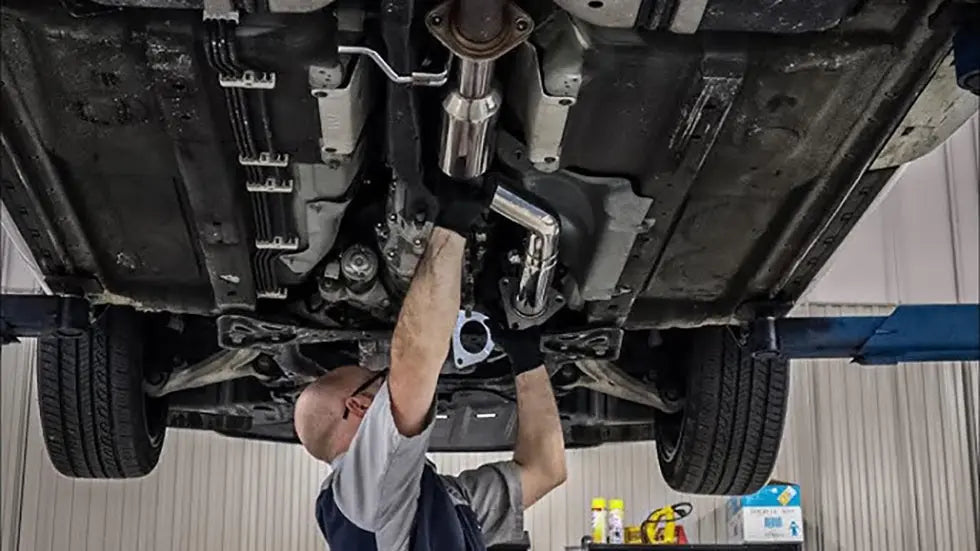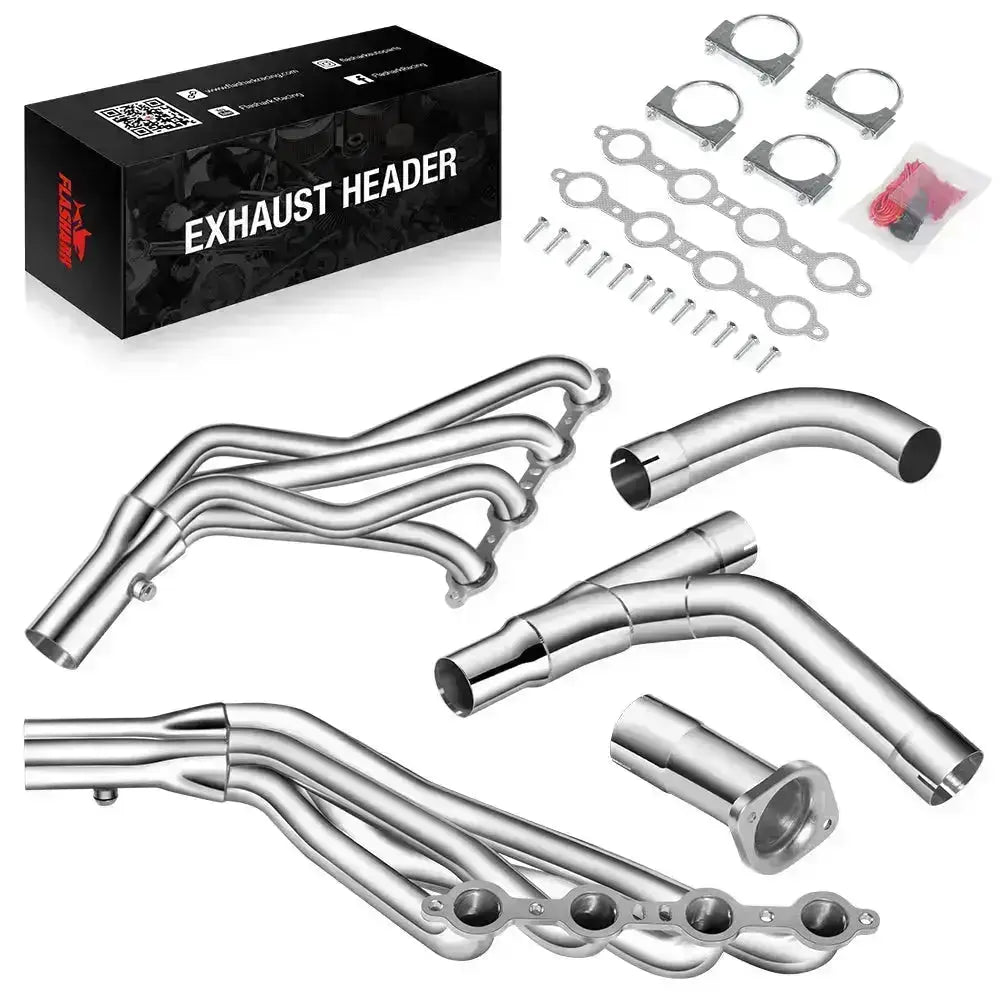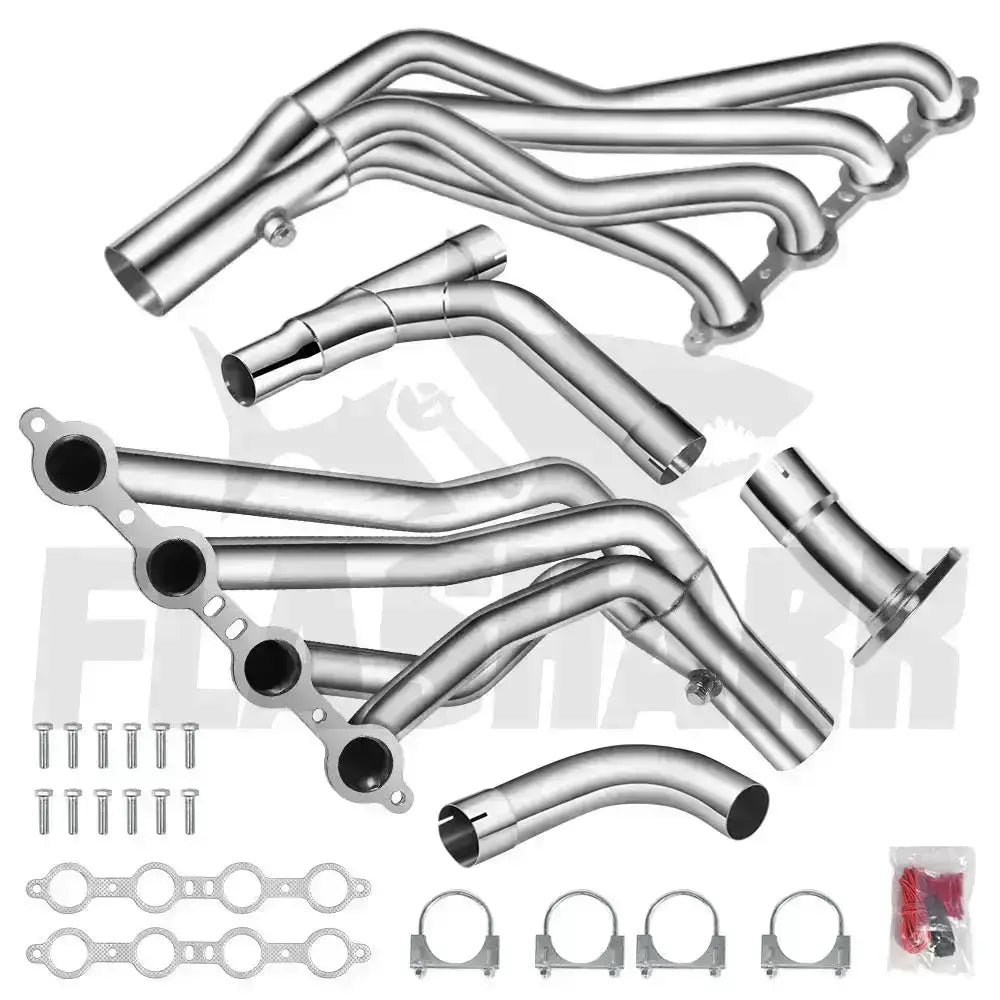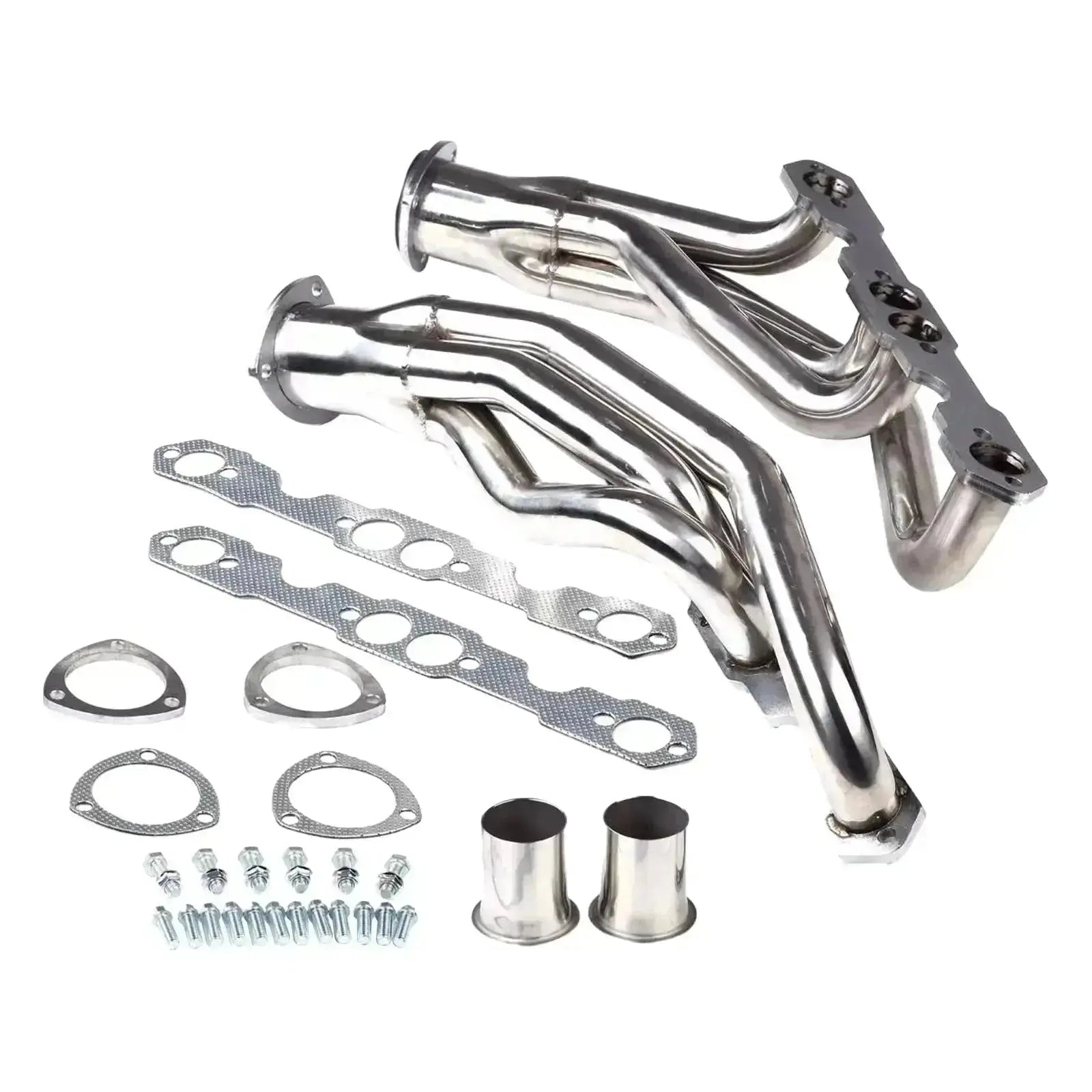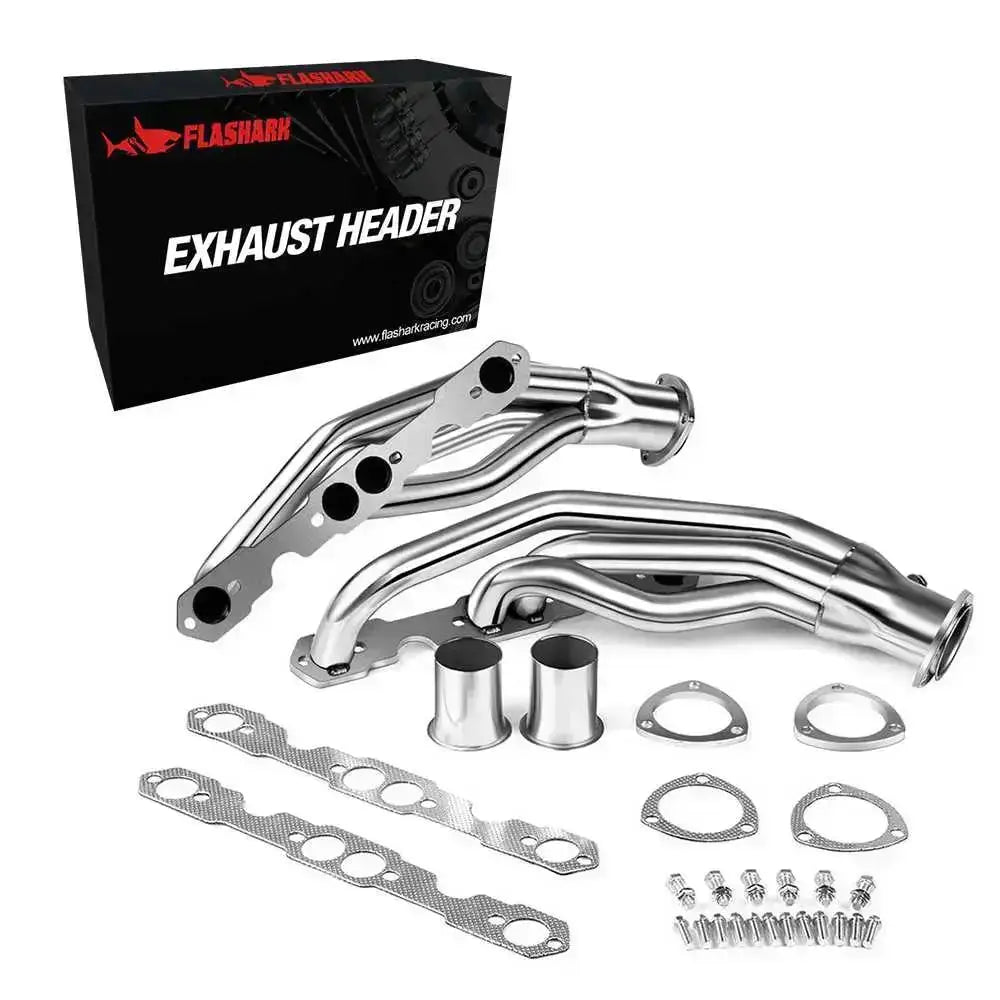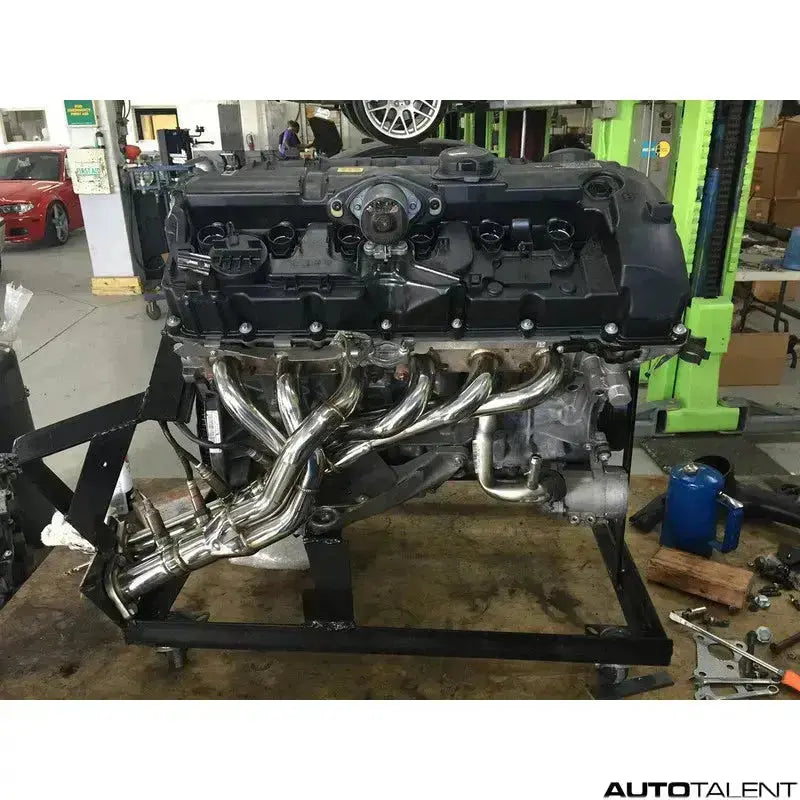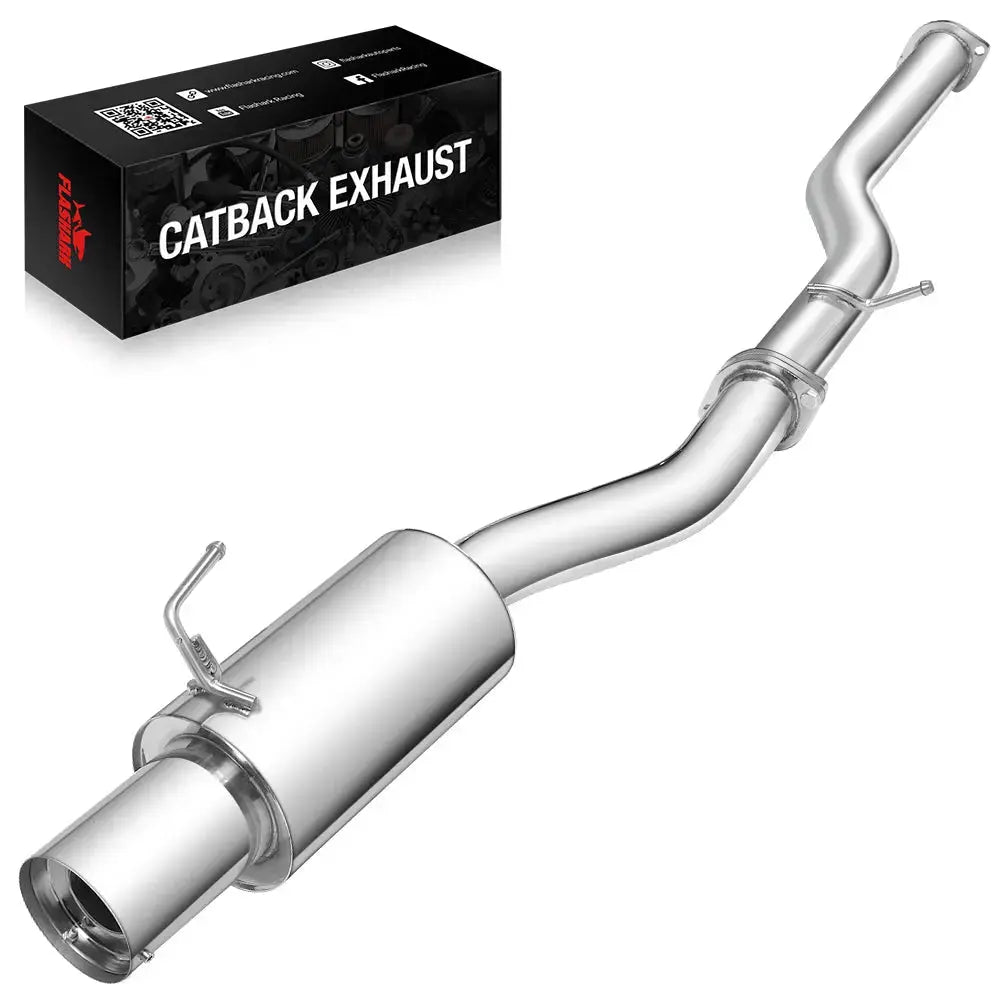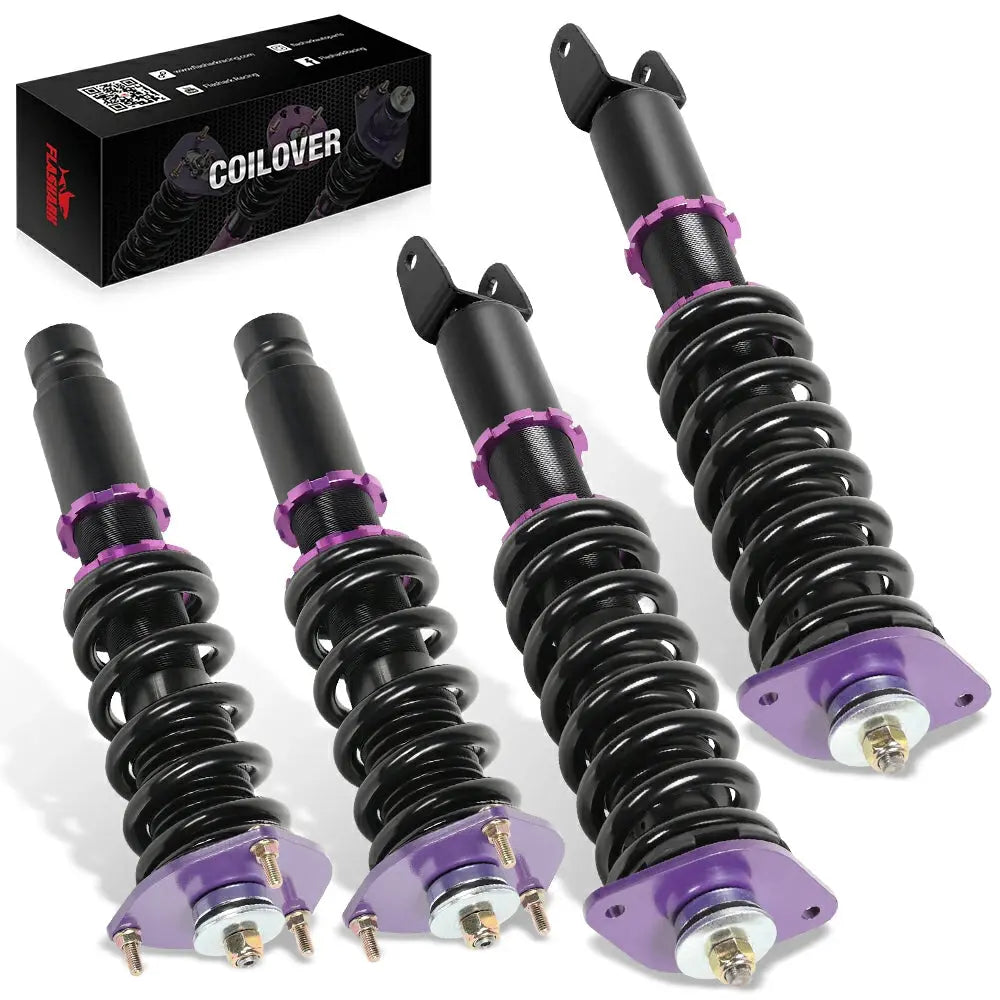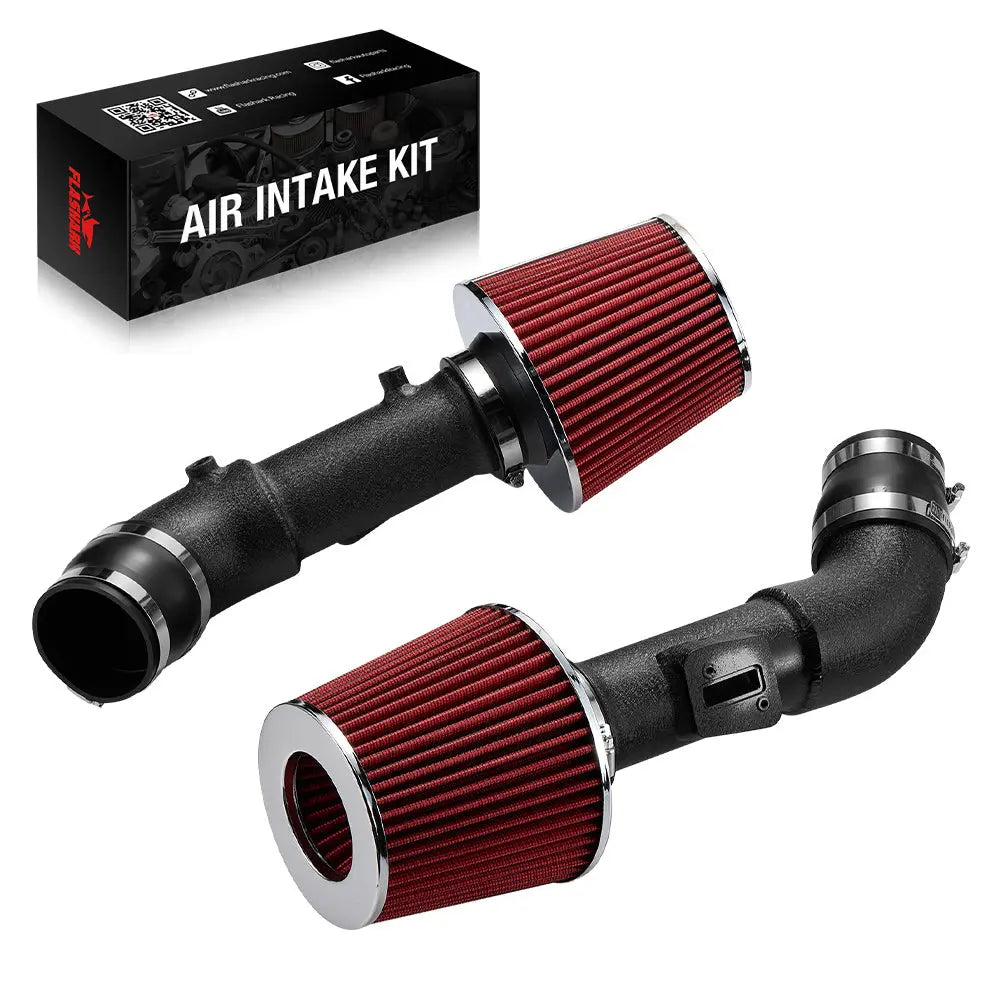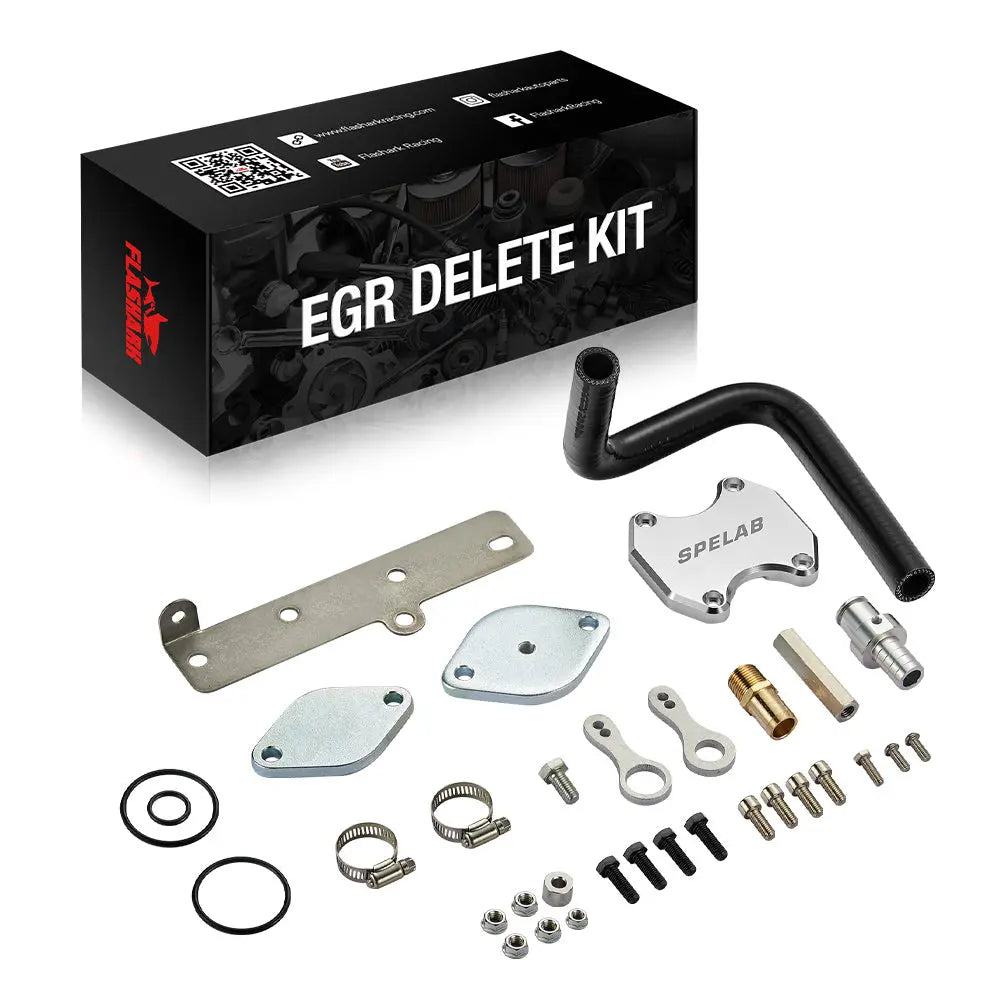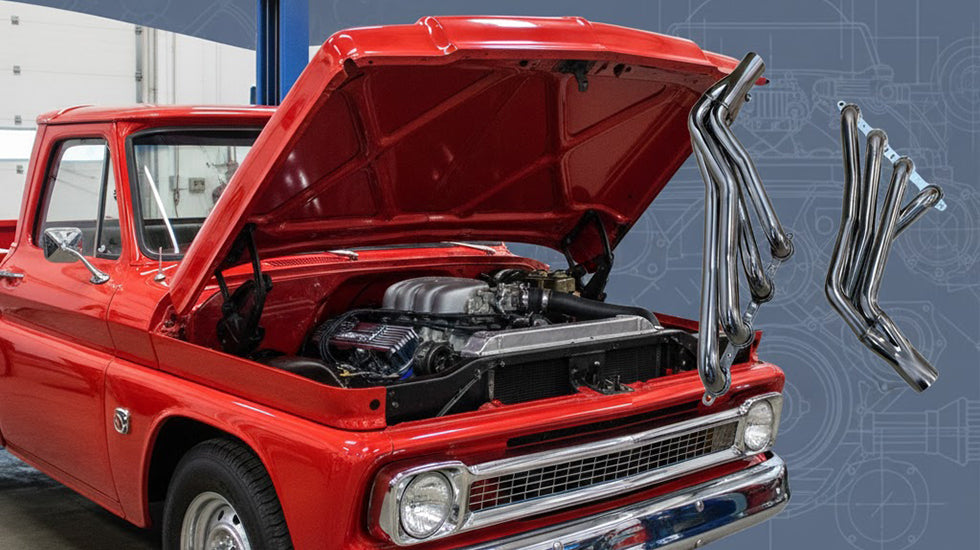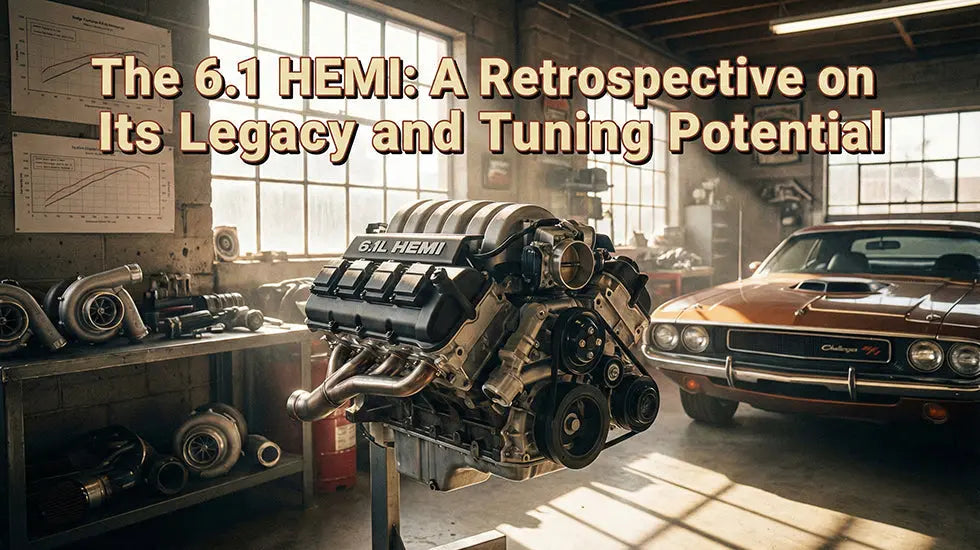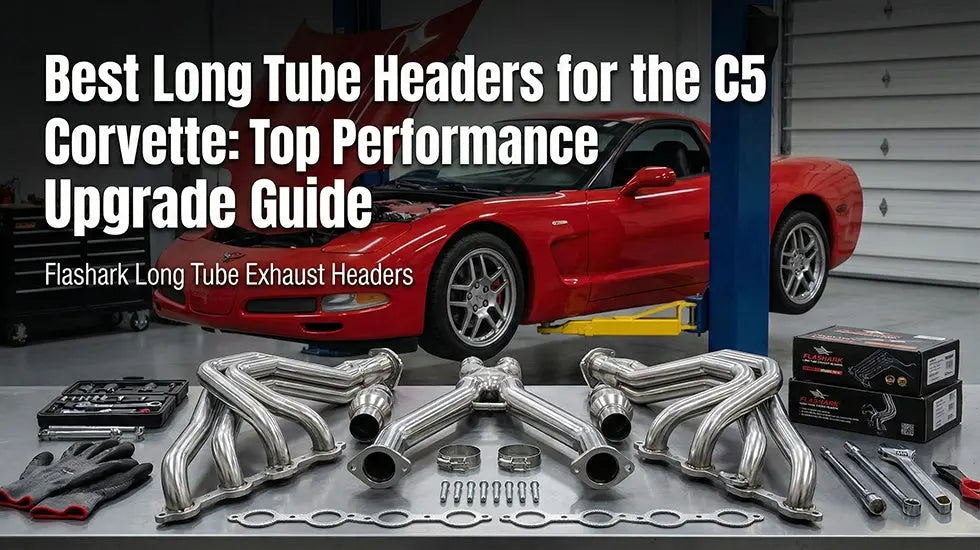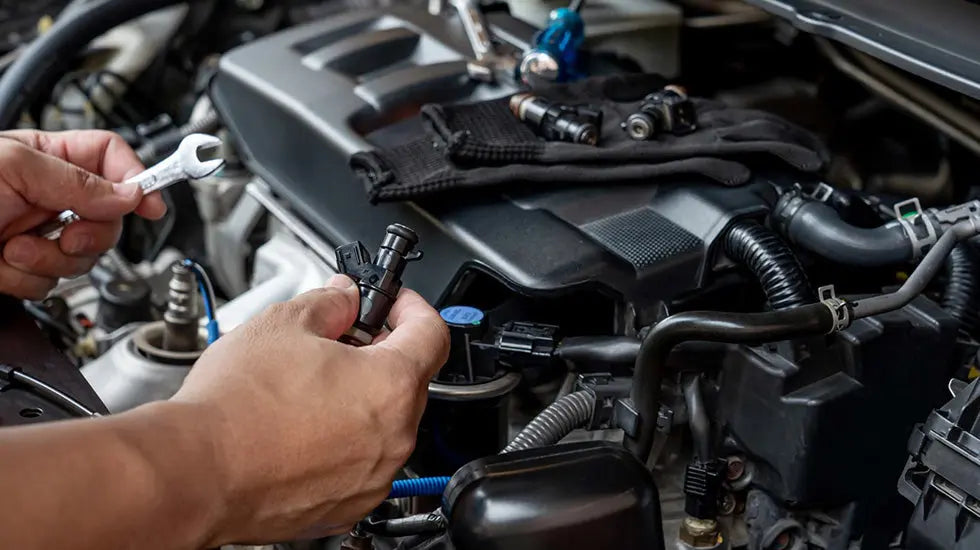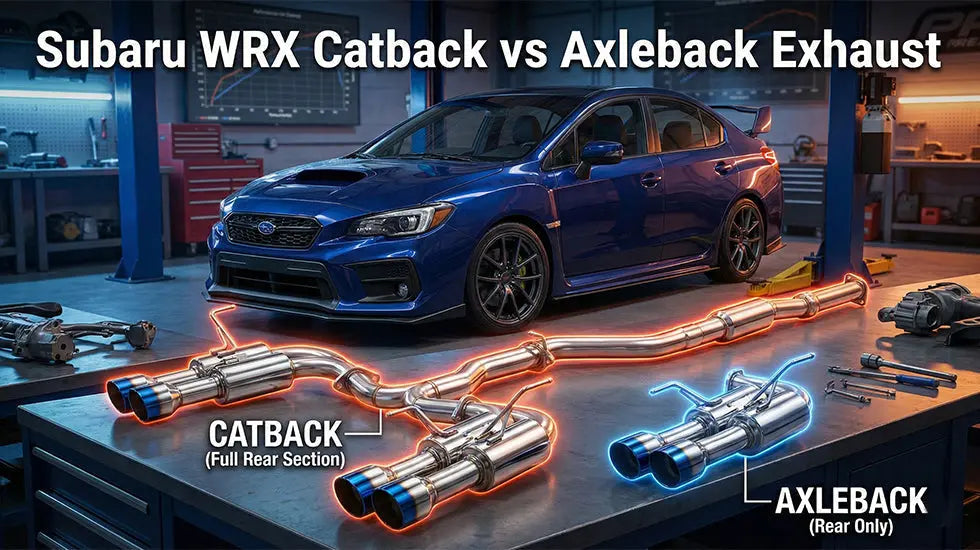When it comes to modifying your vehicle’s exhaust system, two popular upgrades are midpipes and downpipes. While both serve essential roles in the exhaust system, they differ significantly in terms of function, performance impact, and sound modification. Understanding these differences will help you make an informed decision based on your goals, whether it’s improving horsepower, altering the exhaust note, or adhering to emission regulations.
Understanding the Functions of Midpipes and Downpipes
The downpipe and midpipe serve distinct purposes within the exhaust system, and their effects on your vehicle’s performance and sound differ considerably. Below, we’ll dive into their respective roles to help clarify their individual benefits.
Downpipe: Power and Performance Focus
The downpipe is a critical component in turbocharged vehicles. It connects the exhaust manifold of the turbo engine to the rest of the exhaust system. By improving exhaust flow and reducing backpressure, the downpipe helps the turbocharger spool more efficiently. This results in improved throttle response and significant power gains, which are particularly beneficial for turbocharged engines like those in BMW's B58/S58 or the Hyundai Veloster N.

When you upgrade to a high-performance downpipe, you can expect a noticeable increase in horsepower, often between 10 to 30 hp, depending on the vehicle and additional modifications, such as ECU tuning. This makes the downpipe one of the most impactful upgrades for turbocharged engines looking for better performance.
Midpipe: Sound and Flow Optimization
The midpipe connects the downpipe to the muffler or tailpipe section. While it plays a secondary role in exhaust flow optimization, its main impact is on the sound of the vehicle. A midpipe can significantly alter the exhaust note, making it deeper, louder, or more aggressive. For performance enthusiasts who want to refine the sound of their car without necessarily aiming for huge power gains, the midpipe is a great option.

While midpipes can improve flow to some extent, their power gains are generally modest compared to a downpipe. Their primary purpose is to tune the exhaust sound and enhance the overall driving experience by making the vehicle more noticeable.
Performance Comparison Between Midpipe and Downpipe
The decision between upgrading the midpipe or the downpipe largely depends on what kind of performance improvement you're looking for. Here's how they compare in terms of power gains, sound modification, and flow optimization.
Performance Gains: Downpipe for Power, Midpipe for Flow
The most significant performance improvement comes from the downpipe. By reducing exhaust backpressure directly after the turbo, it helps the engine breathe more freely, allowing it to achieve better power and throttle response. This makes it the best choice for turbocharged vehicles that are often bottlenecked at the downpipe.
In contrast, a midpipe doesn’t have as much of an impact on power. While it slightly enhances exhaust flow and reduces some restrictions, it is not as critical as the downpipe when it comes to increasing horsepower. Midpipes are more effective at fine-tuning the sound and ensuring smoother airflow without substantial changes in power output.
Sound Impact: Midpipe Makes the Difference
For enthusiasts who are focused on altering the sound of their vehicle, the midpipe is the better upgrade. The midpipe plays a key role in shaping the exhaust note, making it deeper, more aggressive, or louder. This is especially noticeable in vehicles that feature custom exhaust systems designed to produce "pops and bangs" or a more pronounced exhaust note.
While a downpipe will also increase the overall exhaust noise, particularly by removing the catalytic converter, it can sometimes introduce unpleasant odors, such as the "rotten egg" smell caused by sulfur compounds (H2S). If you're looking to change the sound of your exhaust without affecting other aspects of the driving experience, upgrading the midpipe is the way to go.
Emission and Legal Concerns: Downpipe vs Midpipe
When choosing between a downpipe and a midpipe, emission compliance is a significant factor. Straight-through downpipes that bypass the catalytic converter can lead to higher emissions, making them illegal in many places with strict environmental regulations, such as California. These modifications can result in your car failing emissions tests or running into legal issues.
On the other hand, midpipes are generally free from such concerns since they do not alter the catalytic converter or emissions system. As a result, they do not impact your car’s ability to pass emissions tests. If you’re looking to modify your exhaust while avoiding legal headaches, the midpipe offers a safer solution.
Choosing Between Midpipe and Downpipe Based on Your Goals
When it comes to selecting between a midpipe and a downpipe, the best choice depends largely on what you aim to achieve with your exhaust modification. Performance enthusiasts might prioritize the significant power gains that a downpipe can offer, whereas those who are looking to adjust the sound and aesthetic of their vehicle may find the midpipe to be the more suitable option.
In this section, we’ll explore specific considerations based on your performance goals and driving needs. Whether you’re tuning for a race, looking to enhance the daily driving experience, or simply want to change the exhaust note, the following guidelines will help you make the right decision.
For Maximum Power: Choose Downpipe
If performance is your primary goal, especially for turbocharged vehicles, the downpipe is the clear winner. By reducing backpressure and optimizing exhaust flow, a high-performance downpipe can significantly increase horsepower, providing gains that range from 10 to 30 hp. This is one of the most effective upgrades for vehicles like the BMW M models or Toyota Supra, where improving turbo performance is crucial.

However, to fully take advantage of a downpipe upgrade, you’ll likely need additional components such as an O2 sensor spacer and ECU tuning. Without these adjustments, the vehicle may trigger check engine lights (CEL) or run suboptimally.
For Sound or Aesthetic Changes: Midpipe is the Way to Go
If your primary interest lies in altering the sound or aesthetics of your vehicle, the midpipe is an ideal upgrade. It offers a more refined way to adjust the exhaust sound, making it louder, deeper, or more aggressive, without the drastic changes in performance that come with a downpipe. For those who want a noticeable sound improvement without focusing on performance, midpipes are often the preferred choice.

Additionally, midpipes can be paired with other exhaust components like tailpipes or mufflers to achieve the perfect balance of sound and performance, creating a more cohesive exhaust system overall.
Track and Race Use: Consider Both
For track-focused modifications, both downpipes and midpipes can be useful. The downpipe helps improve overall power and turbo response, while the midpipe ensures that exhaust flow remains optimal. However, it’s essential to consider local noise regulations and emissions laws for track use, as some racetracks have strict noise limits and emissions requirements.
Common Recommendations and Findings
After analyzing the key differences between midpipes and downpipes, we can look at common findings based on vehicle type, modifications, and driving goals. Turbocharged vehicles, in particular, benefit significantly from a downpipe upgrade, while naturally aspirated engines might find midpipe upgrades to be more beneficial.
In this section, we’ll summarize some of the most common recommendations from enthusiasts and experts, as well as findings on how different cars react to these modifications.
Turbocharged Cars: Downpipe Is a Must
Turbocharged vehicles often experience significant benefits from downpipe upgrades. Discussions and forum threads frequently highlight that the downpipe is the bottleneck in turbocharged engines, restricting exhaust flow. By upgrading to a high-flow downpipe, these vehicles see improved turbo response and significant power gains. Popular turbocharged models, such as the Veloster N, BMW M-series, and Toyota Supra, benefit the most from this modification.
Naturally Aspirated Engines: Midpipe Might Be More Beneficial
For naturally aspirated (NA) engines, the impact of a downpipe upgrade is less pronounced. In these cases, a midpipe upgrade may be a more cost-effective way to improve exhaust flow and sound. Many owners of BMW naturally aspirated engines find that midpipe modifications provide a noticeable sound enhancement and slight performance improvement without the need for a more expensive downpipe upgrade.
Noise and Day-to-Day Use
If you drive your car daily, consider how your exhaust modifications will affect noise levels. Downpipes, especially those that remove the catalytic converter, can increase both noise and emissions, which might be undesirable for regular driving. Midpipes, however, offer a cleaner way to modify your car’s sound, making them a better option for daily drivers who want an aggressive exhaust note without excessive noise.
Legal Considerations and Other Considerations
Emission Compliance and Local Laws
One major consideration with straight-through downpipes is their potential to cause your vehicle to become non-compliant with emissions laws. Areas like California have strict regulations regarding emissions, and a downpipe modification can make your car illegal to drive on public roads. Choosing a high-flow catalytic converter version of the downpipe is one way to mitigate this issue while still gaining performance benefits.
ECU Tuning: Essential for Maximum Benefits
When upgrading to a downpipe, ECU tuning is often required to fully unlock the potential of the modification. Without proper tuning, your car may not perform optimally and could even experience issues such as error codes or poor drivability.
Managing Noise Levels: Exhaust Valve Control
Both downpipes and midpipes can increase exhaust noise, which may not be suitable for all drivers. To manage noise levels and avoid excessive volume, opting for an exhaust system with valve control can be an excellent solution. This feature allows you to adjust the exhaust sound depending on your driving conditions, making the system more versatile and compliant with noise regulations.
Conclusion: Finding the Right Upgrade for Your Vehicle
In summary, both midpipes and downpipes offer distinct benefits depending on your priorities. If you're focused on maximizing performance, especially with a turbocharged engine, a downpipe is the optimal choice, offering significant gains in power and throttle response. For those seeking to alter the sound of their exhaust system or refine the tone, a midpipe provides an effective solution with minimal impact on performance.
While downpipes offer clear advantages for performance enthusiasts, midpipes shine when it comes to sound customization and exhaust flow optimization. Ultimately, the decision comes down to your specific needs—whether you're chasing horsepower, refining exhaust noise, or balancing both with legal compliance.
By understanding these differences, you can make a more informed choice that aligns with your goals, ensuring your exhaust modification enhances your driving experience to its fullest.

